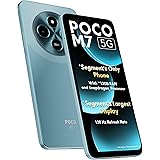With the help of the philosophy of ikigai (生き甲斐), you can find out what the meaning of your life is and what it is that’s worth living for. This is made up of the characters for living (生き – iki) and value (甲斐 – gai) and can therefore be translated as something like the value or meaning of life. The Ikigai method is intuitive and individual, but you should still take a little time to come to grips with it. We’ll show you which questions you need to answer to find your own purpose in life, which you can use to achieve happiness in your job and personal career.
Ikigai (生き甲斐) is more than just a concept of life; it is the Japanese art of finding your own purpose in life. The philosophy shows how to achieve a fulfilled, happy life through self-reflection, mindfulness and conscious decisions. Between vocation, passion and social contribution lies the personal ikigai—the reason worth waking up for every day.
Go directly to:
Ikigai: What is it and what can it do?
Ikigai is deeply rooted in Japanese culture and is a philosophy for finding joy in life. Until the 1960s, ikigai (生き甲斐) was actually equated with shinigai (死にがい), which translates as ‘what is worth dying for.’ In military Japan, the meaning was initially related to the emperor and the nation. It wasn’t until the economic upturn in the 1960s that the focus shifted to life, and the movement then spread to the West in the 1990s.
Ikigai stands for an all-encompassing philosophy of life that is supposed to lead to happiness and fulfilment in all areas of life. Have you ever thought about your personal purpose in life? Why do you wake up every morning? That’s exactly what the Ikigai model is used for. The advantage of Ikigai is that it is a very intuitive model because there are basically only four questions that, when linked together, represent our purpose in life.
Ken Mogi and Ikigai: For those who want to learn more
When you start looking into Ikigai, one name keeps coming up: Ken Mogi. The Japanese neuroscientist explains the philosophy of ikigai using scientific findings and inspiring life stories of real people. Through his experience with Japanese culture, his book Ikigai: The Japanese Art of Living provides a deep insight into the cultural roots of this philosophy.
He also discusses the five pillars of ikigai. Unlike the questions you ask yourself in order to arrive at your personal Ikigai, the five pillars of Ikigai are more of a basis that you need in order to be able to find out how to arrive at your purpose in life. In this way, you learn to perceive things around you differently and sharpen your awareness.
The five pillars of Ikigai
- Start small
- Learning to let go
- Living in harmony and sustainability
- Discovering the joy of small things
- Being in the here and now
What is my ikigai?
Each of us has our own ikigai—an individual reason worth waking up for. Finding your own ikigai is a lengthy process that requires a lot of patience and time. You have to ask yourself personal questions and go deep within yourself to find the right answers. To fundamentally familiarise yourself with your own Ikigai, you need to understand and process a simplified form of life-spanning philosophy. Nobody wants to read seven books to understand the basic concept. That is why we are presenting a simplified form here via the four Ikigai questions
The four Ikigai questions to ask yourself
Ikigai is made up of four subject areas, which can be imagined as a circular diagram. In the centre of the diagram is the intersection of all four areas—your own Ikigai. In addition, your deepest motivations and basic needs can be derived from the intersections of two neighbouring circles: passion, mission, vocation and profession.
Source link











